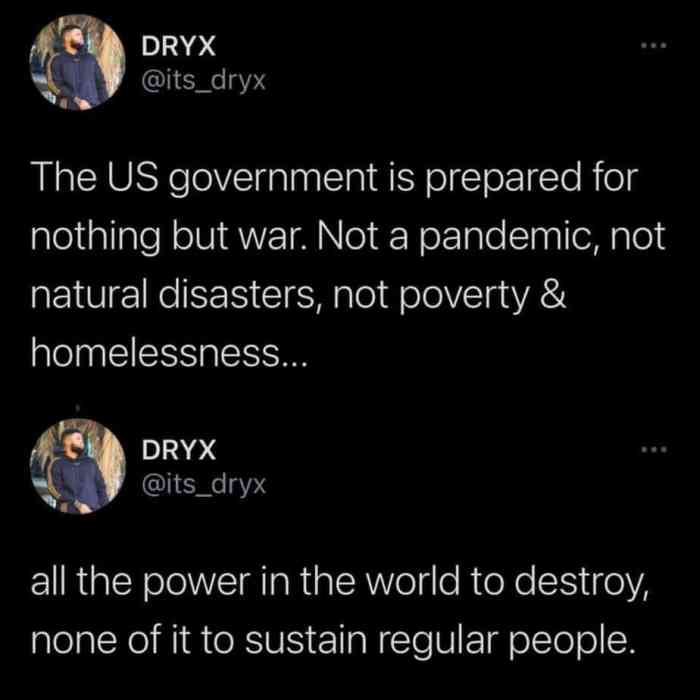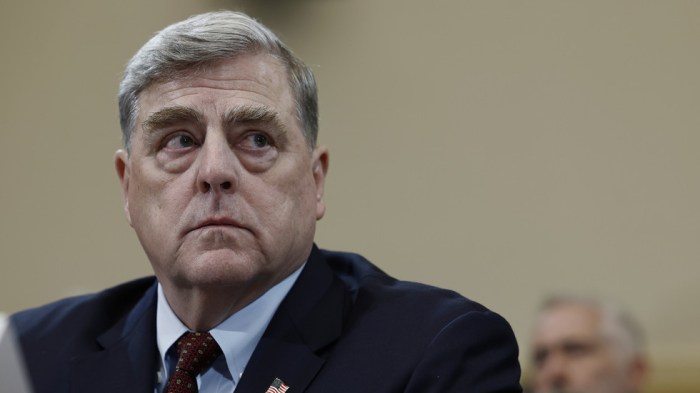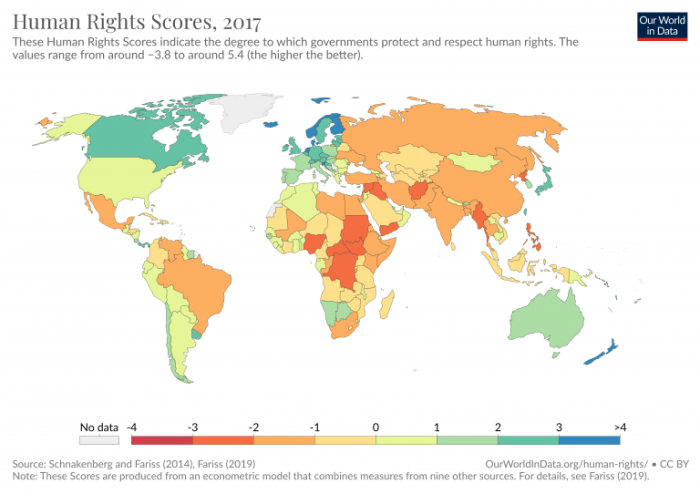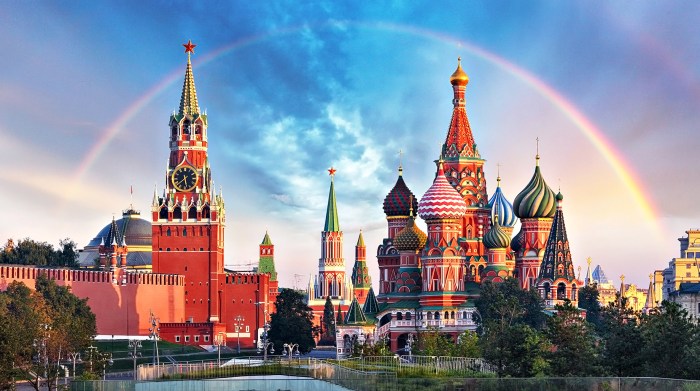
The u s no longer the worlds only superpower – The US no longer the world’s only superpower, a paradigm shift is underway in global power dynamics. For decades, the United States held a dominant position, but the rise of other global players and internal challenges have significantly altered the landscape. This shift impacts international relations, economic stability, and the very future of the global order.
This exploration examines the multifaceted factors contributing to this decline, from economic stagnation and military challenges to political instability. We’ll delve into the historical context, analyzing the rise and fall of previous superpowers and contrasting them with the current geopolitical climate. The tables presented provide a quantifiable comparison of economic, military, and political strengths between the US and emerging powers, shedding light on the changing balance of global influence.
Shifting Global Power Dynamics: The U S No Longer The Worlds Only Superpower

The unipolar world order, dominated by the United States after the Cold War, is increasingly challenged. The rise of new economic and military powers, coupled with the persistent geopolitical complexities of the 21st century, signals a shift towards a multipolar world. This evolution necessitates a critical re-evaluation of the global landscape and the forces shaping it. Understanding historical precedents of power transitions, alongside contemporary trends, is crucial for navigating this new era.The United States’ ascent to global dominance was facilitated by factors including its robust economy, advanced military, and democratic ideals.
However, this position is now facing increasing competition from nations like China and others, with implications for the global political and economic system. The relative decline of American influence is a complex process influenced by multiple factors, not just one singular event.
Historical Overview of US Global Power
The United States emerged as a major global power in the 20th century, largely due to its economic strength, military might, and geopolitical positioning. The two World Wars and the subsequent Cold War significantly shaped the US role on the world stage. From the post-World War II Marshall Plan to its involvement in various global conflicts, the US exerted substantial influence on international affairs.
Its economic leadership through institutions like the World Bank and the International Monetary Fund cemented its position.
Rise and Fall of Other Global Powers
Throughout history, numerous powers have risen and fallen. The Roman Empire, the British Empire, and the Soviet Union each dominated the world stage for extended periods before their influence waned. Factors like economic stagnation, internal conflicts, and the emergence of rival powers invariably contributed to their decline. Analyzing these historical trends offers valuable insights into the current dynamic.
Comparing Current and Past Superpower Competitions
The current global political landscape differs from previous eras in several crucial ways. While economic and military competition between superpowers existed before, the rapid pace of technological advancement and the increasing interconnectedness of the world amplify the impact of these shifts. The digital revolution and the rise of new technologies introduce complexities not seen in earlier eras of superpower competition.
The US’s dominance as the sole global superpower is definitely fading, and recent actions like the Trump administration’s sanctions on Syria, as detailed in trump united states sanctions syria what happens next , are further evidence of this shift. These kinds of moves, while perhaps strategically significant in the short term, ultimately underscore the changing global landscape and the rise of other influential players.
It’s a fascinating time to observe how the US’s role in the world continues to evolve.
Furthermore, the global economic system, including the international monetary system, has become increasingly complex.
Key Factors Contributing to the Decline of American Influence
Several factors contribute to the decline of American influence. These include the growing economic and military strength of competing nations, the rise of protectionist sentiments, and the increasing fragmentation of the global order. A persistent national debt and the lingering effects of past wars also contribute to the evolving global landscape. These internal factors, alongside external pressures, are crucial to understanding the changing power dynamic.
Emerging Global Powers and Their Impact
China’s economic growth, combined with its military modernization and assertive foreign policy, positions it as a significant challenger to the US. Other nations, like India and Brazil, are also gaining prominence in the global arena. These emerging powers, with their unique characteristics, are reshaping the international order. Their rise is impacting global trade, investment, and political alignments in profound ways.
Comparative Strengths of Major Powers
| Factor | United States | China | India |
|---|---|---|---|
| Economy | Largest GDP, dominant financial institutions | Second-largest GDP, significant manufacturing sector | Rapidly growing economy, strong IT sector |
| Military | Largest military budget, advanced technology | Growing military, significant naval and air power | Growing military, focusing on regional security |
| Political Influence | Extensive alliances, global presence | Increasing influence in developing nations, assertive foreign policy | Growing influence in South Asia, emphasis on diplomacy |
The table above provides a basic comparison of economic, military, and political strengths. These metrics are constantly evolving and complex factors like technological advancements and geopolitical alliances further influence the balance of power.
Economic Declines and Repercussions
The United States’ global influence is inextricably linked to its economic strength. Periods of economic stagnation or decline have historically impacted the nation’s ability to project power and shape international affairs. The current economic landscape, marked by a complex interplay of factors, presents a significant challenge to America’s traditional role as a dominant global force. These challenges require a careful examination of the interconnectedness between economic health and global standing.Economic stagnation, when persistent, erodes a nation’s capacity to invest in defense, diplomacy, and development aid—all crucial components of maintaining global influence.
A weakened economy also diminishes the attractiveness of American ideals and values to other nations, potentially leading to a decline in the appeal of American models for economic and political development.
Impact of Economic Stagnation on Global Influence
Economic stagnation directly reduces the US’s ability to fund and maintain its global presence. Reduced budgets for foreign aid and military spending translate to diminished influence in international affairs. This is particularly evident in regions where the US relies on economic incentives to foster cooperation and alliances. Additionally, economic weakness can lead to a decline in the attractiveness of American institutions and policies, as other nations seek alternative models for growth and development.
Role of Debt, Inflation, and Trade Imbalances
High levels of national debt can hinder a nation’s ability to invest in crucial sectors and support global initiatives. Inflation erodes purchasing power, reducing the ability to influence international trade and investment. Furthermore, persistent trade imbalances can create resentment and mistrust, undermining the foundations of international economic cooperation. The impact of these factors on the US economy is evident in the recent rise in borrowing costs and the slowing pace of economic growth.
For example, the increasing national debt and rising interest rates reduce the government’s ability to support programs that maintain the US’s global leadership.
Examples of Economic Weakness Affecting Foreign Policy
Economic challenges can constrain foreign policy options. The US may be less willing or able to intervene in international crises, or to engage in costly diplomatic initiatives. A reduced capacity to provide economic aid to allies may also affect the strength of international alliances. For example, the 2008 financial crisis significantly impacted the US’s ability to respond to global economic downturns, hindering its influence in international financial institutions.
Consequences on International Alliances and Partnerships
Economic hardship can strain international alliances and partnerships. Economic anxieties can lead to protectionist policies, undermining the foundation of international trade agreements and agreements that foster global cooperation. A lack of economic stability can make allies less willing to cooperate with the US on shared challenges, such as climate change or terrorism.
Comparative Analysis of Economic Growth Trajectories
Comparing the economic growth trajectories of the US with other major economies, such as China, reveals stark differences. China’s rapid economic expansion has challenged the US’s position as the world’s dominant economic power. The differing growth rates reflect varying approaches to economic development and investment strategies. A sustained period of slower growth for the US could accelerate this shift in global economic power dynamics.
US Trade Relations with Key Partners and Competitors
| Partner/Competitor | Major Export to the US | Major Import from the US | Trade Balance (USD Billions) (2022) |
|---|---|---|---|
| China | Consumer goods, electronics | Agricultural products, industrial machinery | -383.5 |
| Canada | Agricultural products, industrial goods | Vehicles, industrial goods | -32.8 |
| Mexico | Manufactured goods, agricultural products | Vehicles, machinery | -116.8 |
| Japan | Vehicles, industrial goods | Electronics, machinery | -68.1 |
| Germany | Machinery, vehicles | Machinery, chemicals | -70.1 |
Note: Trade balances are subject to change and depend on the source of data. This table provides a snapshot of the economic relationships between the US and major partners and competitors in 2022. The trade balance figures reflect the difference between exports and imports and can reveal potential trade tensions.
Military and Technological Challenges
The shifting global power dynamic is not just about economic competition; it’s also profoundly impacting the landscape of military strategy and technological advancement. The United States, historically dominant in military might, faces a growing challenge from rising powers seeking to erode its technological edge and adapt their strategies to counter American influence. This evolution demands a careful examination of the changing nature of warfare, emerging technologies, and the military capabilities of both the US and its rivals.The traditional understanding of warfare, centered on large-scale conventional conflicts, is being fundamentally reshaped by advancements in technology.
Cyber warfare, asymmetric tactics, and the increasing importance of information dominance are becoming increasingly critical components of modern conflict. This necessitates a reassessment of military doctrine and the development of new capabilities to counter these evolving threats.
Evolving Nature of Warfare
The nature of warfare is changing dramatically. Traditional concepts of battlefield dominance are being challenged by the proliferation of asymmetric warfare tactics. Non-state actors, equipped with advanced weaponry and utilizing unconventional strategies, pose a significant threat to established military forces. The blurring lines between conventional and unconventional warfare, combined with the growing importance of cyberattacks, require a more comprehensive approach to national security.
Emerging Military Technologies
Several emerging technologies are poised to reshape global power dynamics. Hypersonic weapons, artificial intelligence-driven systems, and directed energy weapons are rapidly advancing, promising revolutionary capabilities in both offense and defense. The development and deployment of these technologies will have profound implications for the future of warfare, potentially altering the balance of power among nations.
Military Budgets and Capabilities, The u s no longer the worlds only superpower
Comparing military budgets and capabilities across nations reveals a complex picture. While the US maintains a substantial military budget, other nations are rapidly increasing their investments in defense. China, in particular, has been making significant strides in military modernization, expanding its naval capabilities and developing advanced weaponry. The implications of these investments are far-reaching, as the growing military power of other nations may challenge the US’s global military dominance.
Counter Strategies of Emerging Powers
Emerging powers are developing strategies to counter US military influence. This involves a multifaceted approach, combining investment in military technology, development of asymmetric warfare tactics, and leveraging alliances with other nations to balance US power. A key aspect of these strategies is a focus on regional power projection, seeking to dominate specific regions rather than directly challenging US global hegemony.
US Military Interventions
| Conflict/Intervention | Years | Description |
|---|---|---|
| War in Afghanistan | 2001-2021 | Intervention following the September 11th attacks, aimed at dismantling al-Qaeda and the Taliban regime. |
| Iraq War | 2003-2011 | Invasion and occupation of Iraq, driven by concerns about weapons of mass destruction and regime change. |
| Intervention in Libya | 2011 | Military intervention aimed at ousting Muammar Gaddafi. |
| War in Yemen | 2015-Present | Intervention involving a coalition of Arab states, primarily Saudi Arabia and the UAE, against Houthi rebels. |
This table provides a concise overview of some major US military conflicts and interventions in recent decades. Each intervention involved complex geopolitical considerations and had far-reaching consequences, influencing regional power dynamics and international relations.
Political and Social Instability
The simmering cauldron of domestic political polarization and social unrest within the United States, coupled with similar upheavals in other nations, significantly impacts the nation’s foreign policy and global standing. This instability creates an environment of uncertainty, hindering the consistent application of effective foreign policy strategies and eroding the US’s perceived leadership role. These internal and external pressures, often intertwined, contribute to a complex landscape of shifting global power dynamics.Political and social instability significantly influences US foreign policy decisions.
Internal divisions can lead to inconsistent and less effective responses to global challenges, as the government struggles to unify behind a cohesive foreign policy agenda. Domestic anxieties and political pressures can sway public opinion on foreign engagements, complicating the administration’s ability to garner support for international interventions or collaborations.
Impact of Domestic Political Polarization on Foreign Policy
The deepening political polarization within the US often leads to a partisan approach to foreign policy. This can manifest as opposing views on international alliances, trade agreements, and military interventions. For instance, differing opinions on the efficacy of international treaties or the wisdom of military engagements can fracture the coherence of the nation’s foreign policy response. The lack of bipartisan consensus can also impede the US’s ability to effectively negotiate and collaborate with other nations.
Role of Political Instability in Other Countries in Weakening US Influence
Political instability in other countries often undermines the US’s efforts to promote democracy and stability abroad. Civil wars, coups, and widespread social unrest can divert US resources, create humanitarian crises, and foster an environment ripe for the rise of extremist ideologies. This can include support for non-democratic actors or even an outright withdrawal from global engagement. The uncertainty and unpredictability of these situations can discourage investment and cooperation, thus diminishing the US’s influence.
Relationship Between US Domestic Policies and International Perceptions of its Leadership
The US’s domestic policies, particularly concerning human rights, social justice, and economic inequality, have a direct bearing on its international reputation and leadership credibility. When domestic policies are perceived as inconsistent with the ideals the US promotes abroad, it can damage the nation’s standing in the international community. For example, disparities in treatment of minority groups or systemic issues like racial inequality can lead to accusations of hypocrisy.
Conversely, demonstrably addressing these domestic issues can strengthen the US’s moral authority and bolster its global leadership.
Examples of How Political and Social Crises in Other Countries Have Impacted US Interests
The Arab Spring uprisings, for example, illustrated the complex challenges faced by the US when supporting transitions in other nations. While the desire for democratic change was evident, the subsequent instability and rise of extremist groups posed significant challenges to US interests in the region. Similarly, the political turmoil in countries like Venezuela or Afghanistan have impacted the US’s ability to maintain strategic alliances and exert influence in the respective regions.
Ways in which Social Movements and Activism Influence Global Politics
Social movements and activism, both domestically and internationally, increasingly shape global politics. The spread of information and communication technologies enables rapid mobilization and coordination across borders. Social media platforms have been crucial tools in organizing protests, advocating for specific causes, and amplifying marginalized voices. Examples include the #MeToo movement and environmental activism, which have profoundly impacted public discourse and policy agendas in various countries.
Such movements exert significant pressure on governments to address social issues and adopt more equitable policies.
Summary Table of Major Political Events and Social Movements
| Country | Year | Event/Movement |
|---|---|---|
| United States | 2020 | Social unrest following the death of George Floyd |
| United States | 2016 | US Presidential election |
| United States | 2020 | Rise of social media activism related to racial justice |
| United Kingdom | 2016 | Brexit Referendum |
| France | 2018-2019 | Yellow Vest Movement |
| Venezuela | 2013-present | Political and economic crisis |
Alternative Perspectives on the Future
The global landscape is undergoing a profound transformation. The decline of US hegemony, coupled with rising powers and shifting economic realities, necessitates a nuanced understanding of potential future trajectories. This involves considering a range of scenarios beyond the simple binary of continued American dominance or immediate decline. Forecasting the future of international relations is inherently complex, requiring an examination of diverse perspectives and potential outcomes.The future of global power distribution is not predetermined.
The US’s global dominance is definitely shifting, isn’t it? It’s clear that other nations are rising, and the US isn’t the only player anymore. This shift is also reflected in the struggles faced by many, like the powerful message in the “disabled mom enough essay” disabled mom enough essay. When we see the realities of everyday struggles, it highlights the need for a more nuanced understanding of global power dynamics, and the US’s role within it.
Ultimately, the world is becoming more complex and multi-faceted, challenging the idea of a single superpower.
Multiple pathways are possible, each with its own set of implications for international relations, economic stability, and societal well-being. Understanding these alternative scenarios requires careful consideration of factors such as technological advancements, geopolitical alliances, and the evolving nature of conflict.
Alternative Scenarios for Global Power Distribution
Different analyses offer various potential futures for global power distribution. These range from a continued US-led order, albeit with diminished influence, to a multipolar world where several major powers share leadership.
- Unilateral US Leadership (Diminished): The US maintains significant global influence, though its role may be less prominent in some sectors. This scenario envisions a world where the US continues to play a key role in international institutions, but with increased collaboration and shared responsibilities.
- Multipolarity: A multipolar system emerges, with several major powers—such as China, the European Union, and potentially others—competing for influence and shaping global affairs. This would involve a complex web of alliances and rivalries, potentially leading to greater instability but also innovation and collaboration in specific areas.
- Regional Blocs: The world fragments into distinct regional blocs, each with its own leadership and priorities. This scenario implies a decrease in global cooperation and a greater emphasis on regional interests. This may lead to economic integration within regions but could create new challenges for cross-border trade and cooperation.
Implications of a Multipolar World for International Relations
A multipolar world would require a significant shift in international relations. Existing institutions and norms may need to adapt or be replaced to accommodate the diverse interests and perspectives of multiple major powers.
The US’s undisputed superpower status is definitely fading. Recent events, like the ongoing legal battle surrounding Trump and Harvard international students ( trump harvard international students court battle ), highlight a shift in global power dynamics. These kinds of controversies, while seemingly unrelated, are just one small example of how the US is losing its dominant position on the world stage.
The world is increasingly multi-polar, and that’s a reality we need to acknowledge.
- Restructuring of International Institutions: Existing institutions like the UN Security Council may need restructuring to reflect the shifting power dynamics. This could involve expanding representation, altering voting procedures, or creating new mechanisms for conflict resolution.
- New Alliances and Rivalries: The formation of new alliances and rivalries among nations is likely. This could lead to increased geopolitical competition but also potentially foster cooperation in areas of shared interest.
- Challenges to Global Governance: A multipolar world could create challenges to global governance, as coordinating actions across multiple centers of power might prove difficult. However, it could also present opportunities for greater flexibility and responsiveness to specific regional needs.
Perspectives on the Role of International Institutions
The role of international institutions in shaping the future of global power is a key point of contention. Different perspectives exist regarding the ability of these organizations to adapt and facilitate cooperation in a changing world.
- Reformist Perspective: This perspective argues for the reform of existing international institutions to better reflect the new power balance. Reform could include adjustments to voting mechanisms, membership structures, and decision-making processes.
- Reimagination Perspective: This perspective advocates for the creation of entirely new international institutions and frameworks to address the emerging challenges of a multipolar world. This might include specialized organizations focused on specific issues, such as climate change or global health.
- Skeptical Perspective: Some argue that international institutions are inherently flawed and incapable of effectively mediating power struggles. This perspective suggests that existing institutions are unlikely to adapt effectively to a multipolar world and that their impact will be limited.
Comparison of Future Global Power Balance Analyses
| Analysis | Scenario | Key Features | Role of International Institutions |
|---|---|---|---|
| Optimistic | Multipolar cooperation | Shared leadership, mutual respect, and collaboration | Reform and adaptation to facilitate cooperation |
| Pessimistic | Regional conflicts and power struggles | Increased competition, mistrust, and potential for conflict | Limited effectiveness in mediating disputes |
| Realist | Shifting power balances with limited cooperation | Power politics will continue to dominate, and cooperation will be contingent on national interests | Institutions will be utilized selectively and strategically by major powers |
Illustrative Examples and Case Studies

The waning influence of the United States is demonstrably impacting global power dynamics, forcing a re-evaluation of international relations and the role of individual nations. This shift is evident in various regions and across different spheres of influence, from economics to military strategy. Examining specific case studies reveals the multifaceted nature of this transition.The decline of US power isn’t a linear process but a complex interplay of economic, military, and political factors.
This is not simply about the US losing its position; it’s about the rise of other powers and the reshaping of the global landscape. Understanding these shifts is crucial for comprehending the evolving international order.
Examples of Waning US Influence in Specific Regions
The United States’ historical dominance in various regions is experiencing a decline. This manifests in several ways, including a reduction in economic influence and a shift in political alliances. For instance, in Latin America, nations are increasingly pursuing independent trade agreements and development strategies, often in partnership with other nations. This showcases a weakening of the traditional US-centric model in the region.
- Latin America: The rise of regional trade blocs and independent development strategies illustrates the lessening of traditional US dominance in the region.
- Africa: The growing involvement of China and other Asian nations in infrastructure projects and resource extraction suggests a diminished reliance on US aid and investment.
- Middle East: The increasing influence of regional powers, coupled with the rise of non-Western actors in the region, reflects the erosion of traditional US-centric approaches to security and political stability.
Case Studies of Countries Challenging US Dominance
Nations are actively seeking alternative paths and alliances to mitigate the impact of perceived US decline. This is evident in the strategic partnerships forged by various countries, which are often driven by economic and security considerations. These partnerships often represent a shift away from traditional US-centric structures.
- China’s Belt and Road Initiative: This initiative illustrates a significant challenge to US influence in Eurasia, offering infrastructure and financial support to countries, often bypassing traditional US-led institutions. This strategic initiative has enabled China to increase its economic and political leverage in numerous countries.
- Russia’s assertive foreign policy: Russia’s actions in Eastern Europe and elsewhere demonstrate a desire to counter US influence and reassert its own regional power. This often involves challenging US-led alliances and asserting an alternative geopolitical vision.
Impact on Global Issues
The changing global power dynamic is significantly impacting various global issues, from climate change to global health. The evolving distribution of power among nations affects the feasibility of multilateral agreements and the willingness of certain nations to cooperate.
- Climate Change: The ability to forge global consensus on climate action is affected by the shift in power dynamics. The diminished ability of the US to exert its traditional influence can impact international agreements.
- Global Health: The rise of new global health challenges necessitates international cooperation. However, the shifting balance of power may affect the effectiveness of global initiatives and the willingness of nations to share resources.
Economic, Military, and Political Interactions
The shifting global power dynamics are reflected in evolving economic and political interactions between nations. This includes the rise of new trade agreements, shifts in military alliances, and altered political alignments. A significant aspect of this is the rise of new international institutions that reflect these changing dynamics.
- Economic Interactions: The emergence of alternative trade agreements and financial institutions demonstrates the shift away from a US-dominated economic order. The formation of new alliances and agreements outside the traditional US framework reflects the shifting economic landscape.
- Military Interactions: The development of new military capabilities by rising powers and the changing nature of warfare demonstrate the shift in the balance of military power. The rise of new military powers and their adoption of new military technologies illustrate this.
- Political Interactions: The formation of new alliances and the emergence of new international organizations reflect the shift in global political power. The growing importance of non-Western powers is reshaping the international political landscape.
Illustrative Table of Evolving Global Landscape
| Region | Country | Example of Shifting Power Dynamic |
|---|---|---|
| Latin America | Brazil | Increasing engagement with China and other non-US partners. |
| Africa | South Africa | Diversifying trade partnerships and investments, reducing reliance on US aid. |
| Asia | China | Initiating infrastructure projects and economic initiatives throughout Eurasia, challenging US influence. |
Final Summary
In conclusion, the decline of the US as the sole global superpower is a complex phenomenon with far-reaching consequences. The shifting global power dynamics, economic challenges, military and technological competition, and political instability all contribute to this evolving reality. The future of the international order remains uncertain, but the emergence of a multipolar world demands a nuanced understanding of the evolving global landscape and the potential implications for international relations.
The tables and case studies offer a glimpse into this complex transition.







